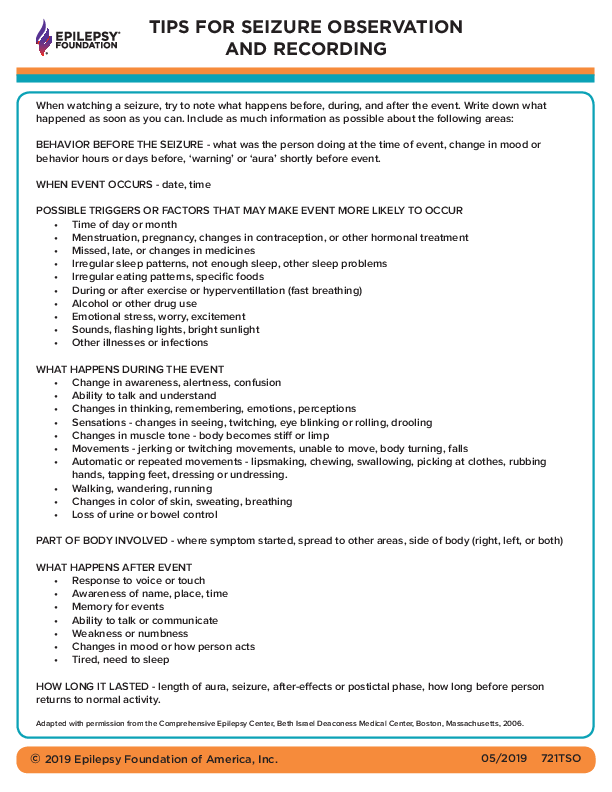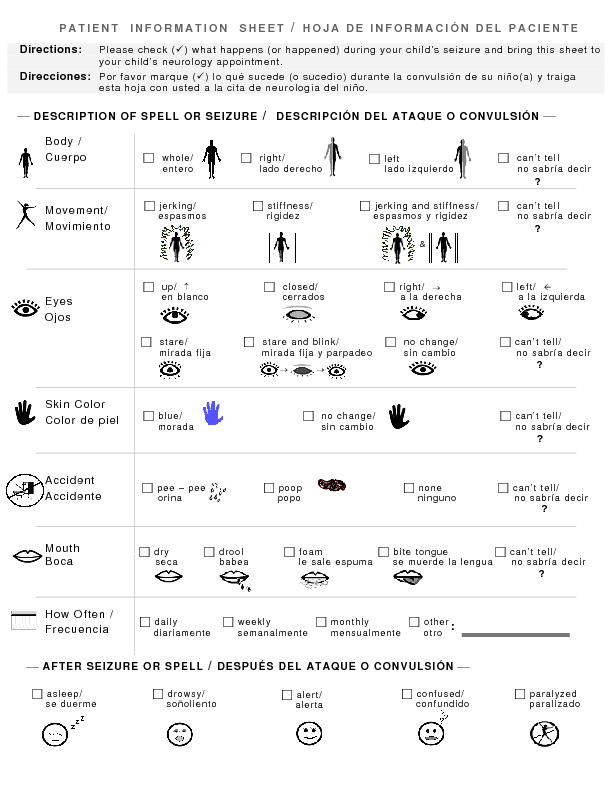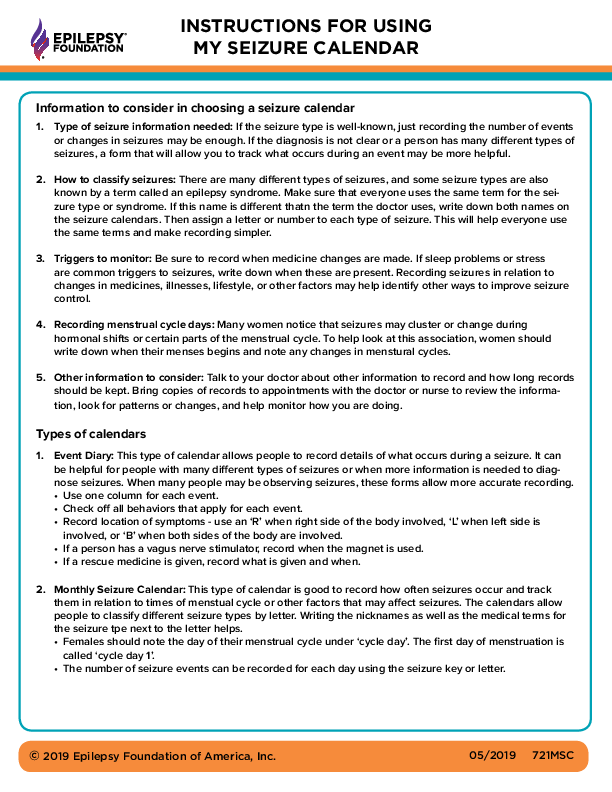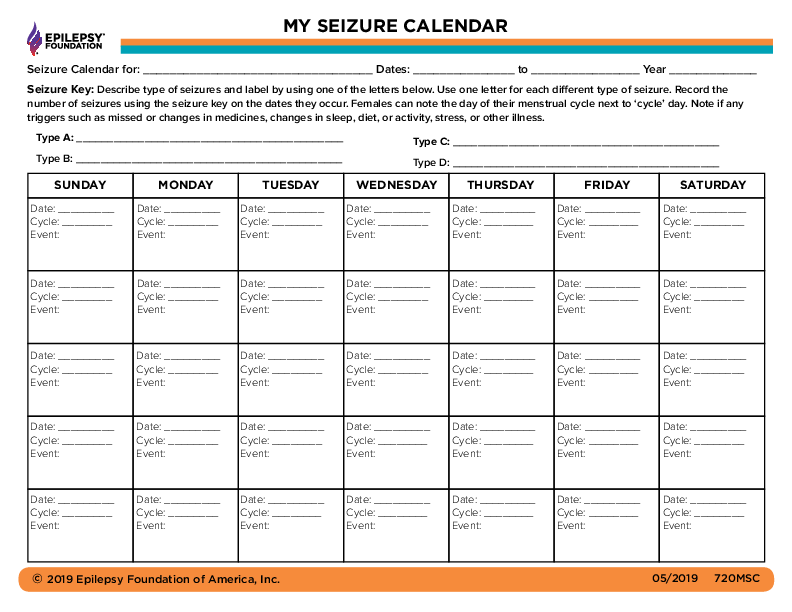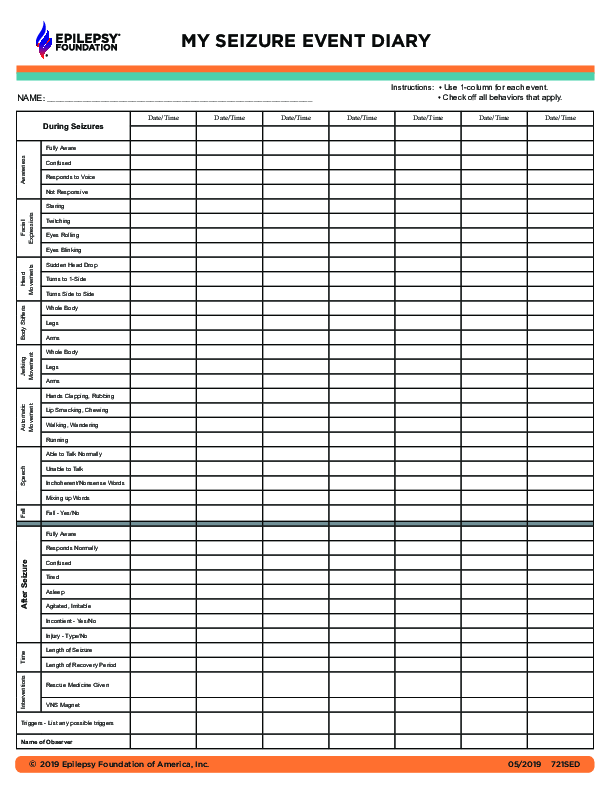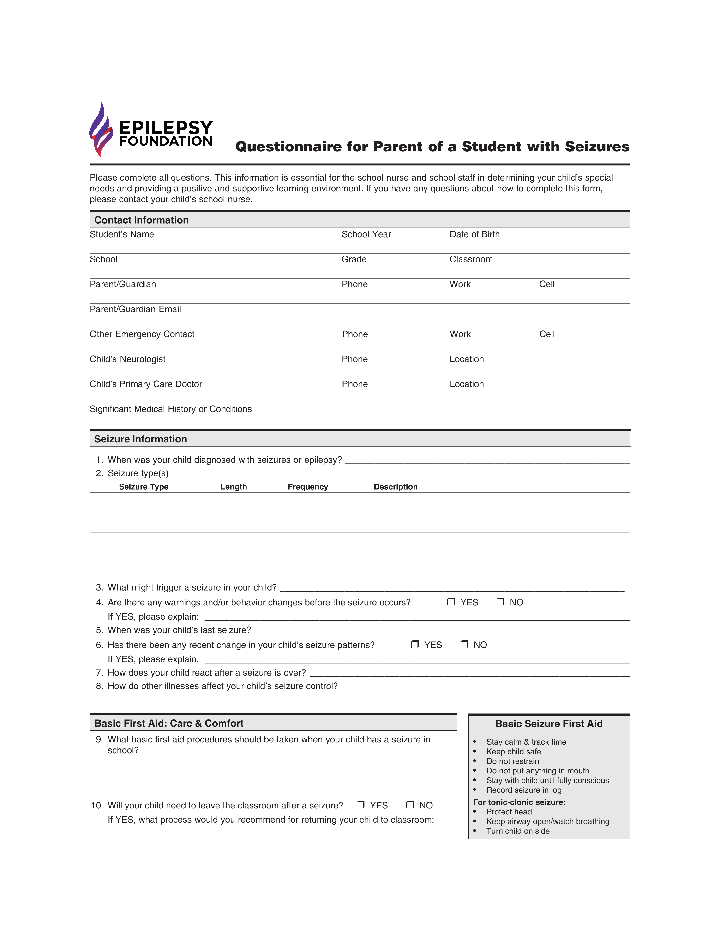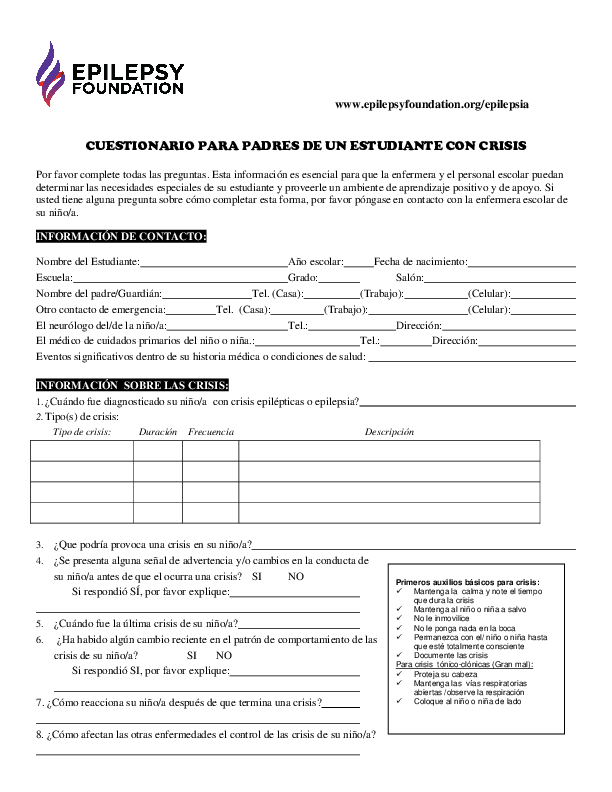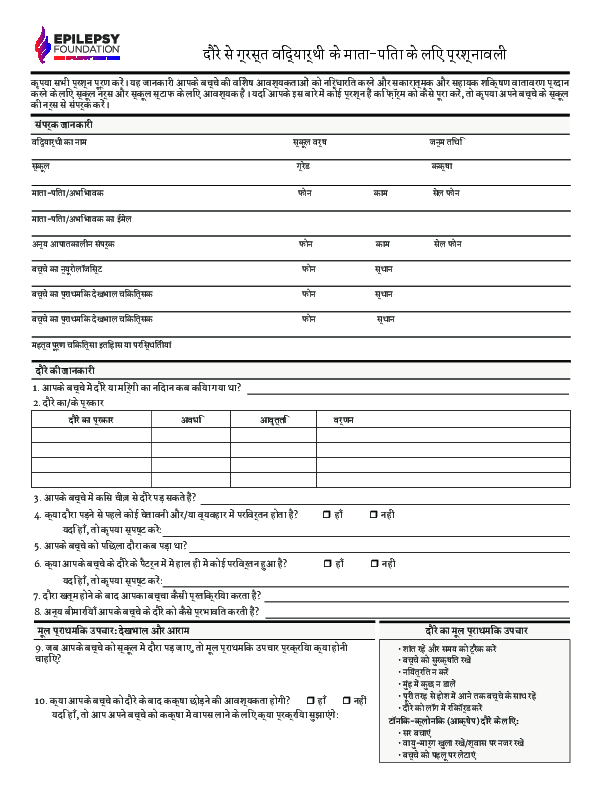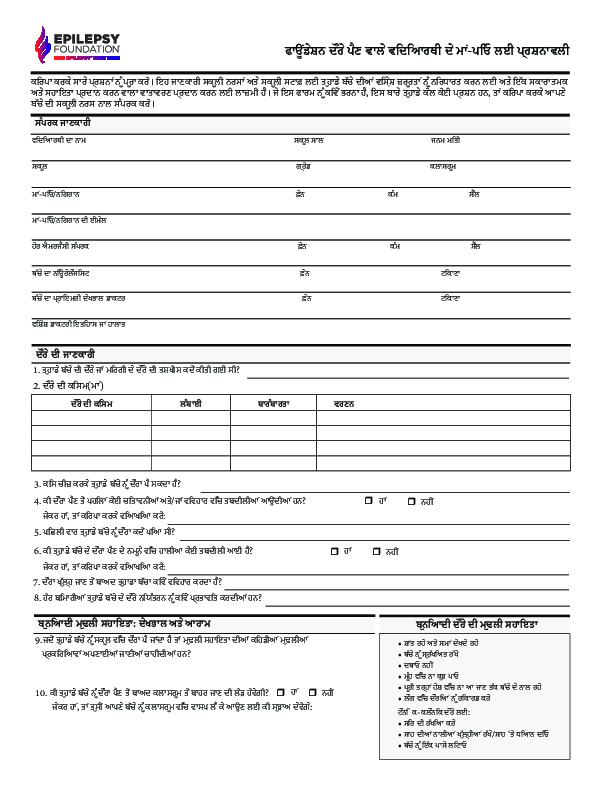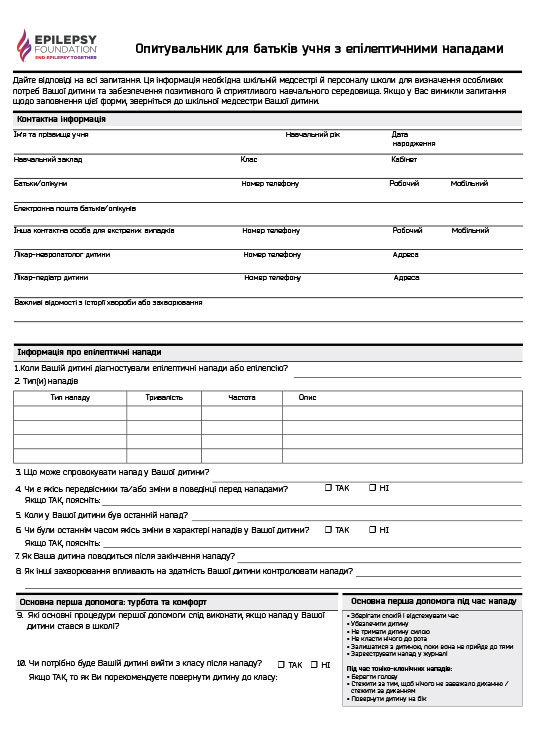Seizure Forms

Observing Seizures
What to observe before, during and after seizures
Describing seizures with pictures
This publication was developed with funding from the federal Maternal and Child Health Bureau, Health Services and Resources Administration under grant #H98MCO 3905-03-01 funded to the USC UCEDD Children's Hospital Los Angeles, through its initiative, Project Access: Improving Care for Children with Epilepsy. Support was also provided by two other partners in Project Access: The National Initiative for Children’s Healthcare Quality (NICHQ), under grant #U23MC038893 and the Epilepsy Foundation, under grant # U23MC03909.
Seizure Recording/Diaries
Instructions for Using Seizure Calendars - a quick 'how to' on choosing and using seizure diaries
My Monthly Calendar - monthly calendar to record type and frequency of seizures, good for tracking menses and triggers
Easy to use checklist to record seizure behaviors
Questionnaire for Parents
Seizure Action Plan For Anyone
Seizure Action (or Response) Plans are available in English and other languages for all ages and any setting. The seizure action plan and additional forms help you create a plan to manage and respond to seizures.
When planning for school, remember to fill out the seizure action plan for school and update it each year.
Additional Forms
Forms Courtesy of the Child Neurology Foundation:
Camp Forms
Supplement to Seizure Action Plan for camps
Resources
Epilepsy Centers
Epilepsy centers provide you with a team of specialists to help you diagnose your epilepsy and explore treatment options.
Epilepsy Medication
Find in-depth information on anti-seizure medications so you know what to ask your doctor.
Epilepsy and Seizures 24/7 Helpline
Call our Epilepsy and Seizures 24/7 Helpline and talk with an epilepsy information specialist or submit a question online.
Tools & Resources
Get information, tips, and more to help you manage your epilepsy.

